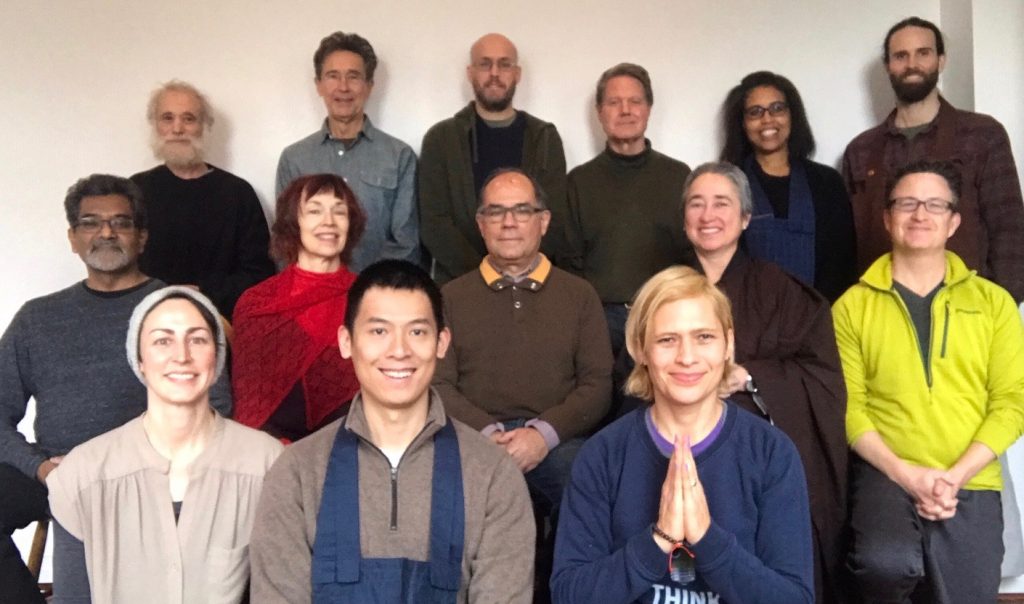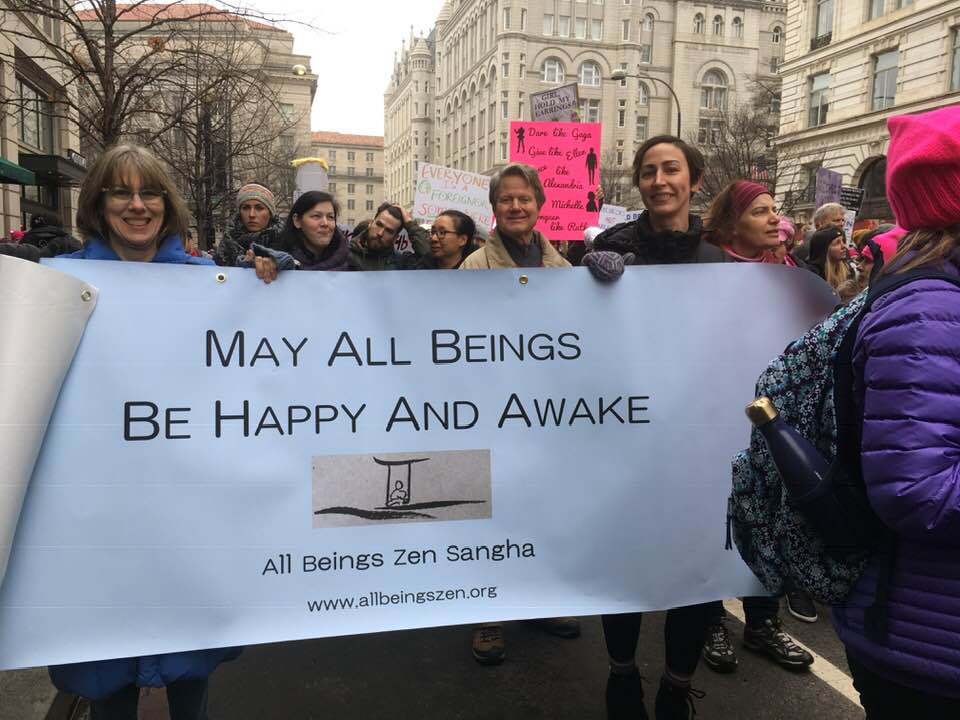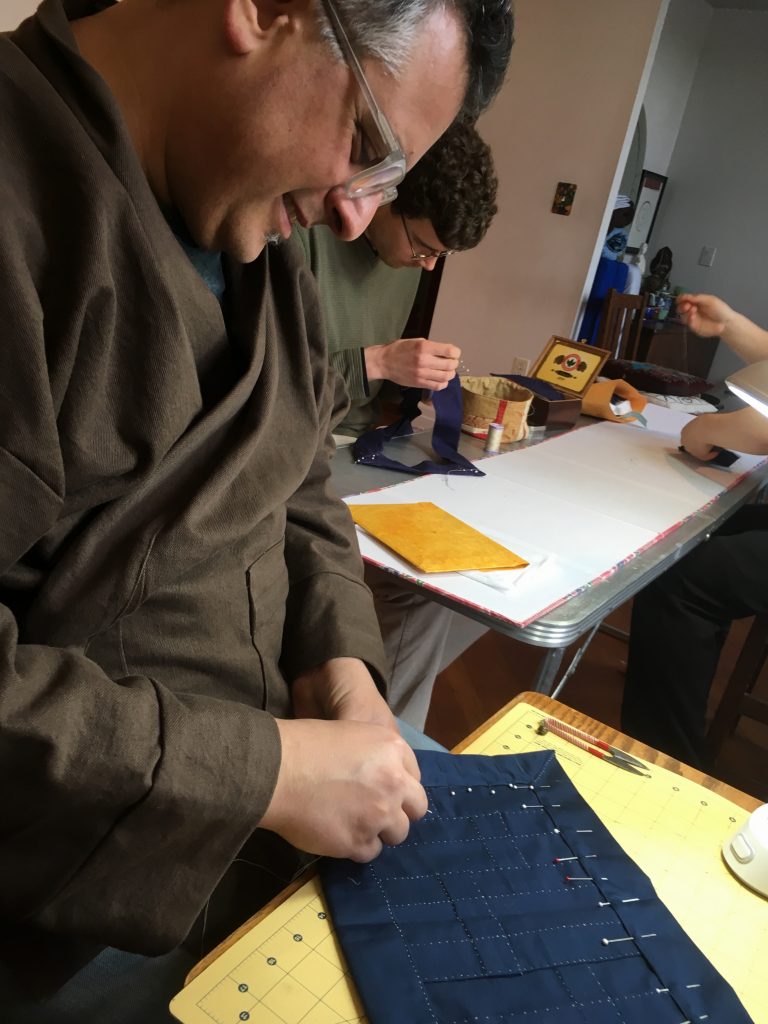
Photography by Vero Hires

The All Beings Zen Sangha welcomes and affirms all who come here to seek the Way, and who will work toward respectful acceptance of others across our many differences, harmonizing the one and the many. May all beings be happy!

Photography by Vero Hires
When: Saturday – March 23th, 2019 9-11:30 a.m.

What : Workshop: Diving deeper into Restorative Justice Practices
What are the ways we show up in conflict? Do we head into it, avoid it or some combination? What do we do when we’ve been harmed or harmed someone? How does this compare to our nation’s way of handling “crime”?
In this workshop you will get an overall understanding of what the umbrella term “restorative justice” means in different contexts. We will dive deeper into methods of conflict resolution, looking systemically and personally. We will also explore our own relationship to conflict and specifically how our Zen or Buddhist practice meets this very natural part of being alive.
No prior knowledge or experience of these topics is necessary. We will explore it together.
About Rev. Michaela
Rev Michaela O’Connor Bono is a Soto Zen Buddhist Priest, and the resident teacher for the Mid City Zen Sangha in New Orleans, LA. Ordained in the Suzuki Roshi Lineage, she has trained at both Tassajara Zen Mountain Center and Green Gulch Farm. She is a founding member of Sakyadhita USA( a branch of the International Association of Buddhist Women) and has served as a board member for Buddhist Peace Fellowship. She is active in prison meditation and chaplaincy ministry and believes everyone has a mystic heart.
The practice of zen practitioners writing death poems was the topic during the afternoon tea discussion yesterday while on zen retreat at Woodburn Hill Farm.
Here is the death poem of Zen Master Keizan which was read during the Zazenkai tea.
“This peaceful rice-field that one has cultivated by oneself, however often one has gone to sell or buy (rice) is as a virgin land. Young sprouts and spiritual seeds, infinitely, ripen and shed (their leaves). Ascending the Dharma Hall, I see men holding a hoe in their hands.” Then throwing away his brush, Zen Master Keizan passed away.
Keizan
1325
Inryu recalled the beautiful death poem of a former Abbot at San Francisco Zen Center, Abbot Myogen Steve Stucky.
Here is Myogen Steve Stucky’s “death poem,” which was placed on the altar in the room with his body when he passed in December 2013.
This human body truly is the entire cosmos
Each breath of mine, is equally one of yours, my darling
This tender abiding in “my” life
Is the fierce glowing fire of inner earth
Linking with all pre-phenomena
Flashing to the distant horizon
From “right here now” to “just this”
Now the horizon itself
Drops away—
Bodhi!
Svaha.
Myogen
12/27/13
Many Zen priests follow a form for writing death poems such as this, sometimes even with regularity throughout their lives.

In Gassho,
Inryu Sensei
Exploring the place of Women in the Soto Zen Lineage
In our long service of bowing and chanting, we recite the “Names of Buddhas and Ancestors” – beginning with the Seven Buddhas Before Buddha, and ending with the founder of our Soto Zen School, Eihei Dogen, and his two immediate successors who established the lineage of teachers that we now honor. All of these are male. In fact, we used to call them “Buddhas and Patriarchs”. In recent years, much research and collaboration by a group of Zen teachers and scholars have created a parallel document, a women ancestors document. What does it mean to have a separate women’s lineage? Why are there no women in the lineage we do chant – or are there? And what does Dogen have to say about women, gender, and separation?
 Rev. Choro with Sensei Inryu in 2015
Rev. Choro with Sensei Inryu in 2015
Rev. Choro Carla Antonaccio is a Soto Zen Buddhist priest ordained in the lineage of Suzuki Roshi by her teacher, Roshi Josho Pat Phelan. She began formal practice in 1999 at Chapel Hill Zen Center where she has been a resident practitioner since 2005. Rev. Choro has trained at Tassajara Zen Mountain Center, San Francisco Zen Center City Center, and Green Gulch Farm. She was Shuso for the Chapel Hill Zen Center community in 2016.
 Photograph taken after our first Zen Retreat of 2019
Photograph taken after our first Zen Retreat of 2019

Join members of the All Beings Zen Sangha for a Fire Ceremony. This is a ceremony were we write down the habits and tendencies, difficult states of mind, tangled aspects of relationships, and so on, that we would like to release. We will have an outdoor small fire to burn our papers along with the name cards from Memorial Services held during the past year and incense stubs and zen sewing thread bits that have accumulated throughout year. Everyone is welcome.
Following the ceremony please feel welcome to join us inside for our regular Wednesday night zen sewing practice and precept study which ends at 7:30pm.

Poem by Benji Robert Quinn on the occasion of Shinren Mark Stone’s Shuso ceremony
All Beings Zen Sangha – Washington DC
December 15, 2018
306: a poem
I
Right here, if you stay very still and wait
You might just glimpse a dragon take her seat,
Unfurl her wings and gaze at a floor
Whose lines shoot an arrow straight at the dusty world,
Where birds sing and blowers wail and lions roar,
Whose footworn sheen is lit by lamps that pass their light
To four windows, each painting a neverending picture
Entitled: “The birth and death of leaves in the wind.”
II
Right here, be you.
Whatever your path,
Whatever the hundred thousand pages
You have written about yourself reveal,
The good, the bad the ugly all meet the same response:
A simple bow that says “I see you. You matter.
But don’t take my word for it. Have a seat and find out why.”
III
Right here you have helped me to carry my heavy book,
Taken the smoking incense from my fingers with care,
Fallen to the floor, just to look into the eyes of a child,
And drawn a wide and gentle circle that asks to be stepped into.
IV
Right here, you have held our practice with your open arms.
Now, hear the Shuso!
Dec 4th- Naomi Ayala SoKei TekiKu (Ancestor Jewel Reveal Sky) to offer a “Way Seeking Mind Talk”
following one period of zazen 7pm

Born in Puerto Rico, Naomi Ayala moved to the United States in her teens. Writing in both Spanish and English, she is author of the poetry collections Wild Animals on the Moon (1997), chosen by the New York City Public Library as a 1999 Book for the Teen Age, and This Side of Early (2008). Her poems have appeared in the anthologies Boriquén to Diasporican: Puerto Rican Poetry from Aboriginal Times to the New Millennium (2007), Latino Boom: An Anthology of U.S. Latino Literature (2006), and First Flight: 24 Latino Poets (2006).
An educator and arts administrator interested in environmental causes, Naomi-san is a recipient of the Connecticut Latinas in Leadership Award, the 2000 Dr. Martin Luther King Jr. Legacy of Environmental Justice Award, and the 2001 Larry Neal Writers Award for Poetry from the DC Commission on the Arts and Humanities.
– bio edited from the Poetry Foundation
Way Seeking Mind Talk
7pm November 29th, 2018 – following one period of zazen
offered by Dae Jin Kevin Hall
